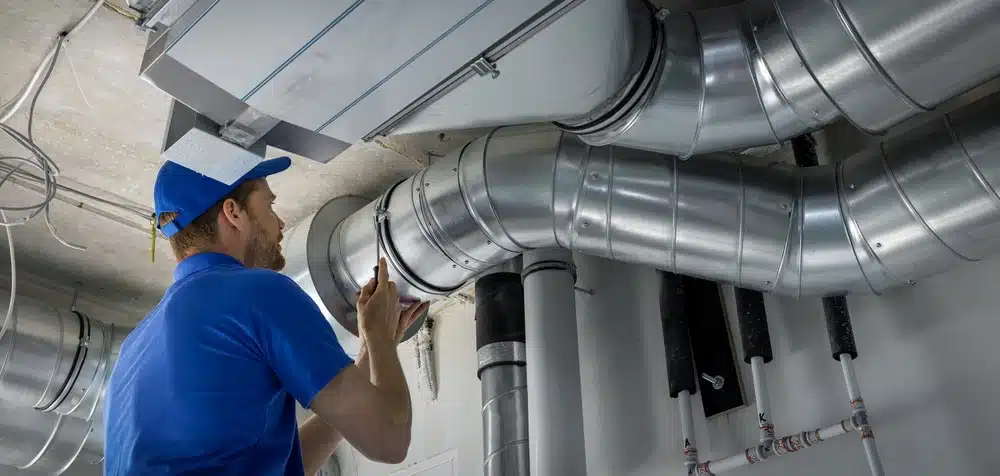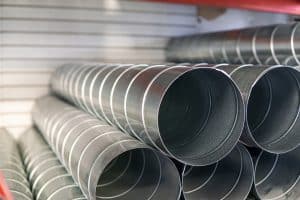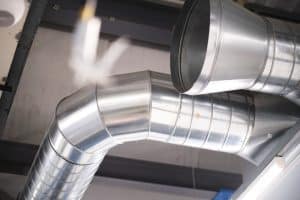What Is the Most Efficient Ductwork?
In order to prevent mould, fresh air should always be introduced into your dwelling on a daily basis, as it helps to regulate temperature and reduce condensation. Introducing fresh air can be as simple as having a ventilation routine, or installing extractors or PIV systems.
For those taking this route and choosing to install themselves, you may be wondering ‘What is the most efficient ductwork?’
We at I-Sells are here to provide the answers you need whilst also supplying you with all the information you need in order to combat mould and have a well-ventilated home.
All of the solutions we offer are in an effort to disrupt the environment necessary for mould to formulate, as mould can have serious health implications as well as spread easily if left unattended.
Why do I need ductwork?
Ducting is used in order to create an isolated airflow for extracted air to travel through, the airflow is facilitated by the use of an extractor fan or PIV systems.
These systems aid in creating a home or space with fresh air and helps to regulate the temperature in order to prevent the cultivation of mould and dampness.
Mould, otherwise known as damp, is a fungus that grows on wet surfaces. Mould reproduces from tiny spores. The spores float through the air and deposit on the surfaces. Under adequate temperature, moisture, and nutrient conditions, the spores can form new mould colonies.
Mould can severely affect your immune and respiratory system, as the spores are easily breathable and not obvious to see through the human eye.
If you have found mould in your home, you need to assess if this is your landlord’s responsibility (for example it could be from a leaking roof that needs repairing). Or if the damp is caused by improper ventilation. To assess your options, click here.
Round ducting or flat? the differences

What is The Most Efficient Ductwork
Round Pipe:
Round ducting has the highest airflow performance, this is due to a wider diameter increasing its free area. The lack of corners also decreases resistance within the pipe, which allows for higher airflow rates and higher rates of ventilation.
It is recommended for most applications where space is available for installation. Its main purposes are for long ducting runs, whole-house ventilation systems, HVAC systems, bathroom, toilet and utility room extract fan venting, or any occasion where high rates of extraction are required.
Round PVC ducting pipe can be used for venting exhaust odours and steam from cooker hoods, although flexible ducting may be easier to install in many instances.
Sizes are available from 100mm, 300mm, 500mm and 600mm diameters, with sizes between these dimensions also available. Both round and flat ducting have smooth inner surfaces to reduce air resistance and noise.
Pros & Cons of Round Ducting
Pros: | Cons: |
High Airflow | Difficult to conceal |
Less friction | Poor results in low-pressure systems |
Lightweight | More expensive than flat ducting |
Corrosion-resistant | |
Better for high-pressure systems | |
Designed for HVAC systems |
Flat Channel Duct:
Flat channel ducting is ideal when a low profile is required due to lack of space. It can also be concealed and flush fit against ceilings and walls or within voids.
Please bear in mind that as a result of a lower free area, there is greater pressure created within a duct run. It is therefore essential that you check the manufacturer information for the fan you are planning to install within the run.
If the fan is extracting at a rate that is greater than the duct run can cope with, there is potential for the fan to overheat and burn out. This is both costly and unnecessary.
Flat channel plastic ducting is generally used for installations requiring low extraction rates such as bathrooms, toilets, and utility rooms. Sizes available from 110x54mm to 310x29mm.
Pros & Cons of Flat Channel Ducting
Pros | Cons |
Corrosion-resistant | Creates more noise within duct run |
Lightweight | Poor results within high-pressure systems |
Easy to flush fit and conceal | Increased air resistance |
Ideal for low-pressure applications |
Be mindful of where you place your ducting in order to understand what kind of ducting you need, and where it’s access doors will be, which are vital in order to maintain the effectiveness of your ventilation by cleaning the ducting buildup at regular intervals.
What is the most efficient ductwork?

What is The Most Efficient Ductwork
Realistically, there is no definitive answer for this as it is purely dependent on the area of installation & the size of the room or space needing air. We’ve provided information on flat channel & round ducting, but alongside that, there is also flexible & rigid ductwork.
Knowing which combination works best for your needs will show you what the most efficient ductwork will be for your circumstances.
Rigid Ducting
Generally made from metal, galvanized carbon steel or stainless steel, (as well as PVC plastic & polypropylene) this option is suitable for permanent ventilation as well as air-conditioning systems/heating, furthermore it can be applied to large scale exhaust/dust extraction.
Advantages
- As the name suggests, rigid ducting is structurally secure & durable, meaning they are built to last & as a result can be used as part of building infrastructure.
- Little maintenance required beyond inspections to take place every few months or annually.
- Suitable for all applications, extraction, exhaust fumes, cold & hot air transfer.
- Weather resistant, you can use them for external mounting.
- Less airflow resistance = increased efficiency.
Possible disadvantages
- The installation process must be thoroughly planned out & can lead to be quite complex, therefore a qualified professional is the best option to avoid any mishaps during this process.
- Consideration must be given to mounting infrastructure due to the weight of metal rigid ductwork (depending on the length & size you opt for)
- The metal itself, along with labour & time taken to plan & install may make this option slightly more expensive.
Flexible ducting
Flexible ducting can be made from PVC, silicone, rubber, aluminium & PU polyurethane. As a result, this ducting is easier to manipulate and therefore can be used in cabinets, a variety of layouts and other small spaces. (this is also thanks to its accordion styled design.)
Advantages
- Flexible by nature which by default makes it easier to install & manipulate post-installation if needs be.
- Can be installed in tight or confined spaces.
- Option for transparent ducting to be able to see potential blockages.
- Can be used as a temporary ducting system
Disadvantages
- Due to the flexible nature of this ducting there is a higher likelihood of punctures
- Regular maintenance checks should be carried out to guarantee efficiency.
- Mostly suitable for internal mounting
- Higher chance of noise than rigid ducting
Can I seal my old ducting myself?
Firstly, why would you need to seal your ducting?
Unfortunately, leaks can occur in your ducting from general usage over time. & it is recommended you test your HVAC system annually to stay on top of any potential repair work.
We do not advise you to leave any ducting with a leak, as soon as a leak is located, be sure to turn the system off, as there will be residual fumes being breathed in which could cause health problems, especially for those with allergies.
It is possible to seal your ducts yourself, however, if you are new to this process we recommended you contact your local tradesman in order to assist you.
The best option to use to seal ducting is by using duct seal. This is a compound designed to fill cracks & leaks in ductwork. Using gloves, attach the case to a mastic gun & simply apply the sealant on the affected area. You can spread the sealant via a plastic spatula or additionally secure the area with fabric mesh.
I-Sells – Ducting

What is The Most Efficient Ductwork
We at I-Sells endeavour to make sure our customers have all the information they need before choosing to invest in our mould solutions. Be sure to visit our blog page to gain knowledge on the wide array of factors and issues surrounding ventilation, mould, condensation, and much more.
We hope to have answered the question ‘What is the most efficient ductwork?’
We understand you may have more questions, Please do not hesitate to contact us for more information with regard to whatever you may need our help with. If you’d like to send us an email, click here. For other contact options, see below:
Call us on 020 8463 9696
Visit us at our showroom:
*OPENING TIMES*
Monday – Friday: 8:00 am to 5:30 pm
Saturday: 9:00 am to 12:00 pm
Sunday: Closed
15 St John’s Parade
Sidcup, Kent
DA14 6ES
United Kingdom





























Add comment
You must be logged in to post a comment.